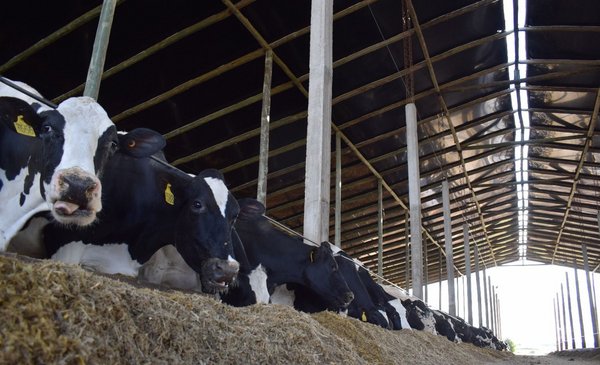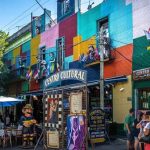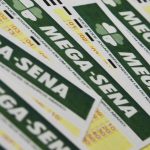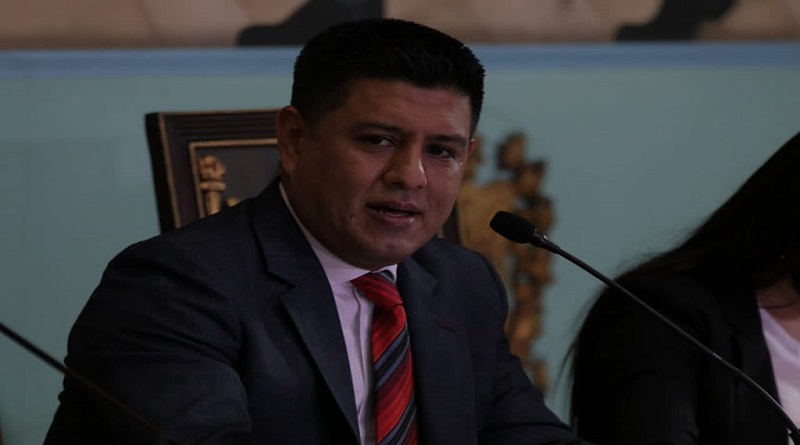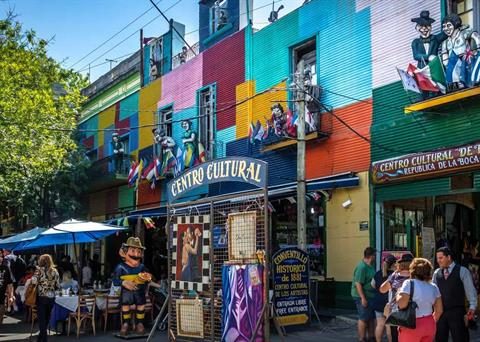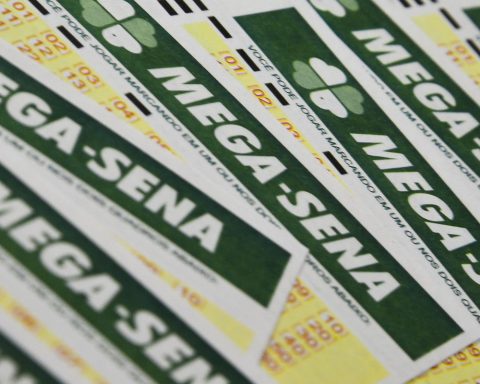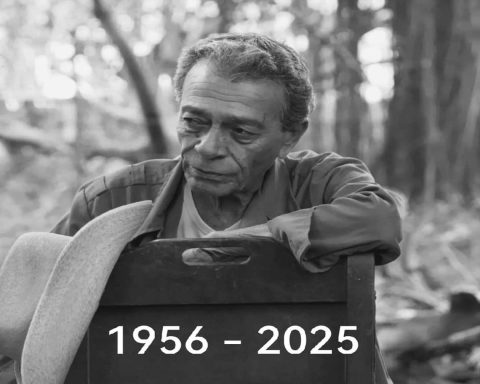Those who run the El Chivo cabin and dairy analyzed, with great patience, experiences abroad and in Uruguay before deciding to install a heated bed system -in which basically milking dairy cows remain indoors–. It’s allowed them a rapid increase in the volume and quality of production. Everything is going so well that they plan to install other roofs, to go from 190 cows to about 1,000 managed under those structures.
The goata family business run by the brothers Julio and Danilo Antognazza and the sons of the former –Julio and Juan Pablo–, refer to Conaprole and its productive system is developed in fields of the Castellanos area, in San José.
Julio Antognazza (h) explained that there are records indicating that the Antognazza family was already milking in that area in 1914.
Today in that company there is a coexistence of the traditional system, with cows that basically consume grass, and another in which the cows are given 100% of their food under a covered area.
john samuel
The roof is to the side of the milking parlor.
In the field, the cows of the high production lot give 32 to 33 liters per daybut when a storm occurs or in the summer there is heat stress, production decreases, it is difficult to recover it (sometimes it is even not achieved).
“The productive yield of the batch under cover versus the batch under grazing was 20 to 25% higher, practically with the same feeding, grass consumption was replaced by silo”explained the producer.
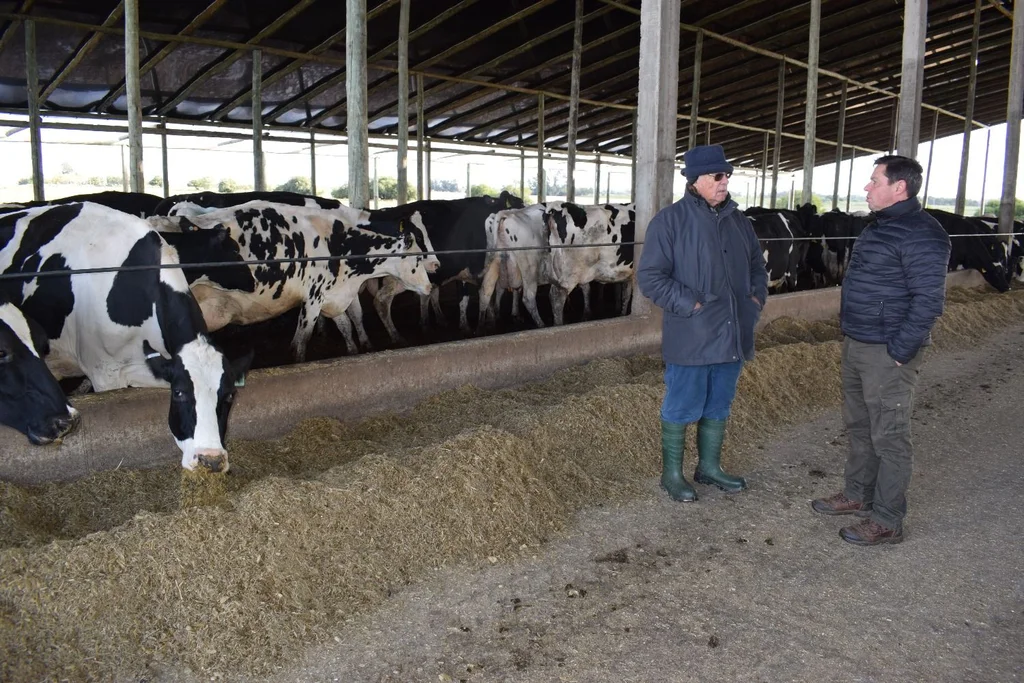
john samuel
Two of the members of the team that runs the dairy, on the street where the mixer passes.
Israel, Paraguay and Uruguay
Antognazza recalled that they first observed this technology by analyzing experiences in Israel, but the characteristics of these systems made it unfeasible to transfer everything as it is to the Uruguayan environment, due to the high costs.
Then, taking advantage of Julio’s role as a jury in exhibitions and as an advisor to other producers, new experiences were considered, for example those in Paraguay, in the Campo Nueve Mennonite colony, where almost all the rodeos are indoors but in buildings where iron It is the protagonist and that also entails unattainable costs.
Finally, a company from Salta offered to build the structure based on wood and nylon. “First we made roofs for the calves, that worked very well, it has been five years with good durability, with a high impact on calves and rearing for greater comfort,” he commented.
At the same time, there were producers who started experiences with roofs, in Colonia. “We saw that and we had already seen the roofs in Salto from producer Pablo Chapuy, who was very happy with the system and gave us many recommendations,” he detailed.
The idea in El Chivo was to start the work in 2020, but a drought limited the availability of fiber for food and it was postponed, starting the work in 2021 and the start of the new management in May of that year.
A house for the cows
Universal measures were used in the construction. “Nothing was done to the Uruguayanwe were only able to comply with the 30% slope in the roof wings, we respected the 4 meters of height on the sides but having to use wood we did not reach 13 meters of height in the center, we reached 10.5 meters and 25% slope”, he explained.
For the two-wing shed, columns of trusses filled with concrete, wood and nylon were used. It is 72 meters long by 56 wide. There is a 5.5 meter central corridor with a concrete floor where the mixer goes and on each side there are low walls next to which the food is placed on the floor, a strategy that facilitates cleaning.
The cows are arranged on each side of this central axis on sidewalks (concrete) of 3.70 meters, in a space for a cow facing the wall eating and a place behind for two cows to pass, one in one direction and another in the other.
The drinking fountains face these paths, avoiding the consumption of water on the side of the bed and thus the concentration of animals on the beds.
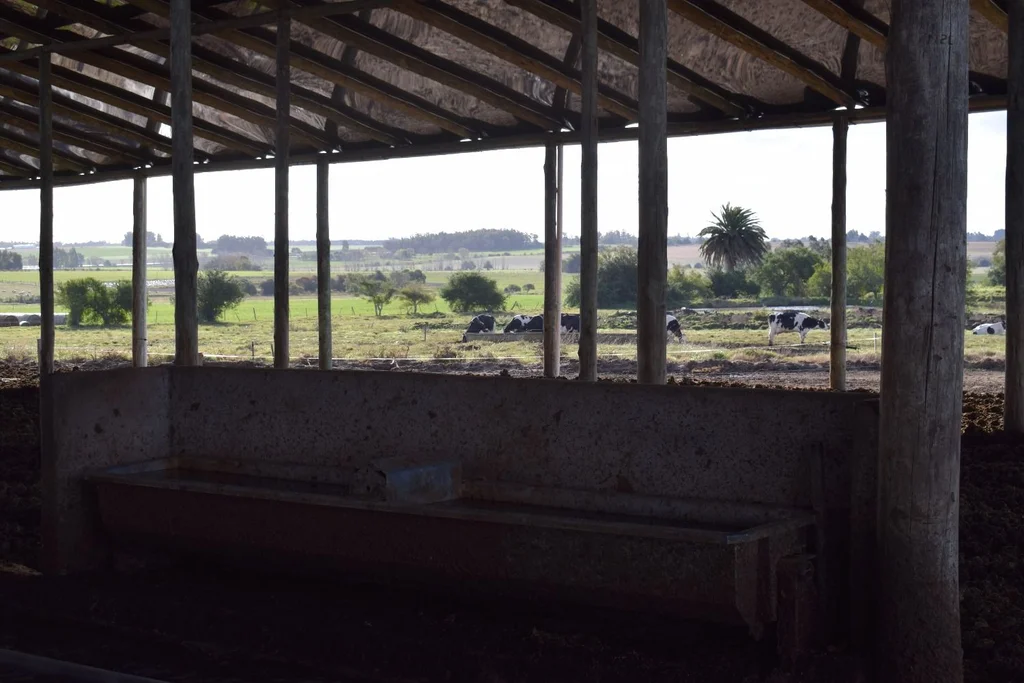
john samuel
On the outside of the roof, a rodeo is still handled in the conventional way.
In the bedding area, there are 16 to 17 m2 per cow at this time of year. Last summer “we challenged them, going to 12m2 per cow, with no problems,” she said.
The litter is a compost, with manure and urine plus a substrate made up of rice husks and/or fine returnable – it is like coarse sawdust that comes from the UPM factory.
“When we see that the litter is moistened more than the optimal level, we add substrate. In addition, every day a tractor passes twice a day with a chisel and a rotavator”, she added, taking advantage of the time when the cows go to the milking parlor (which is very close, next to the roof).
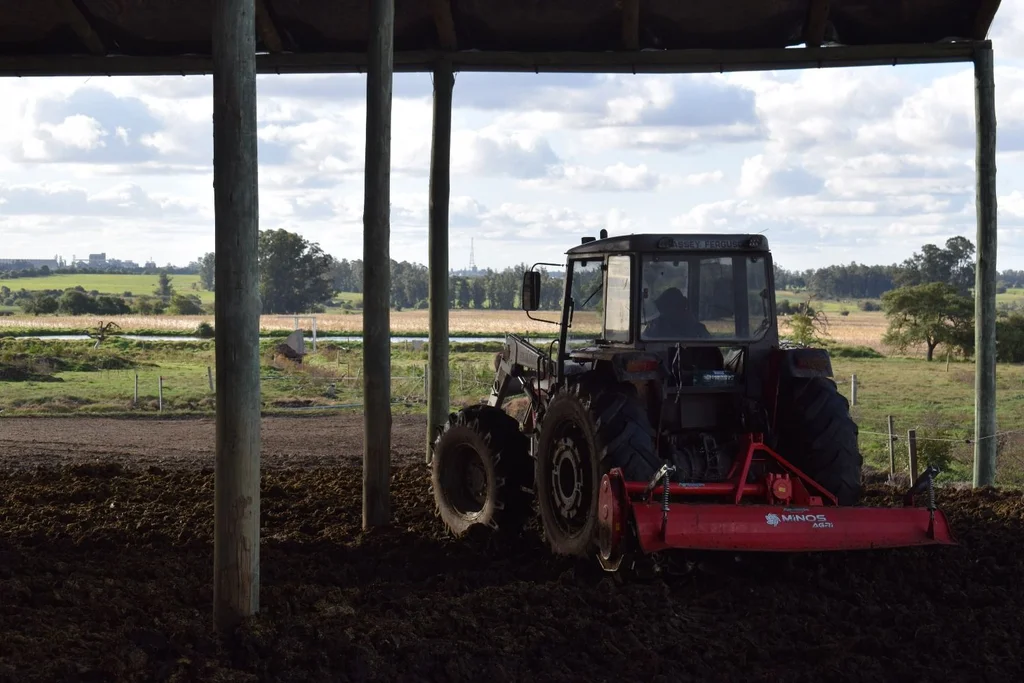
john samuel
Twice every day, the beds are moved to avoid unsuitable humidity levels.
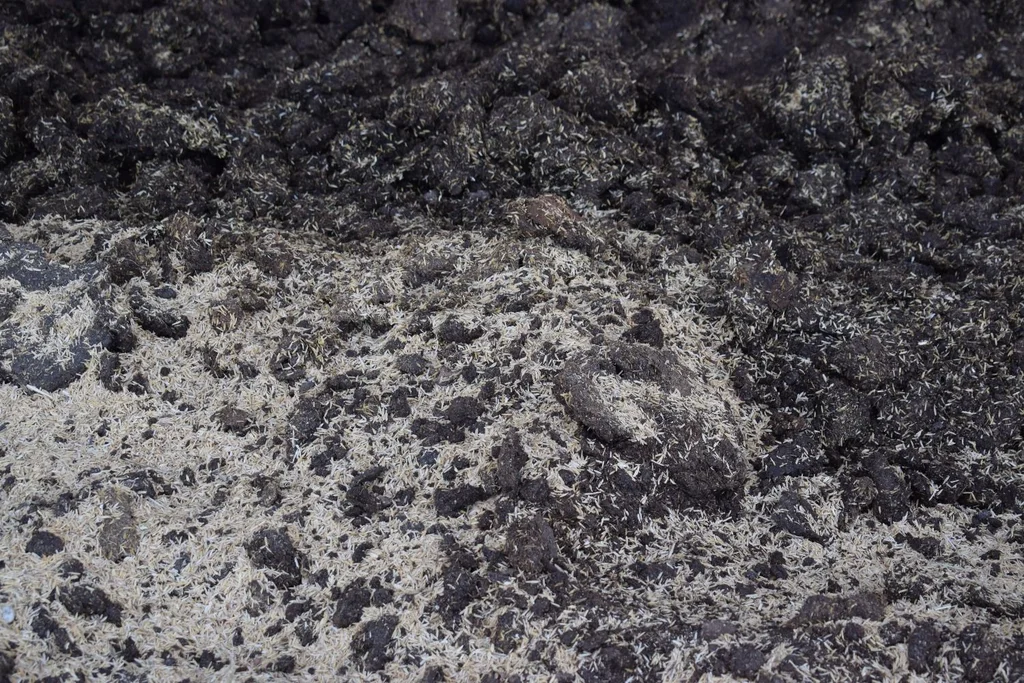
john samuel
The litter is a mixture of manure, urine and a substrate.
Under this roof there are 190 cows. Every day they consume 33 kg of corn silo, 6 kg of oat silo, 8 kg of wet corn grain, 4 kg of soybean expeller and 2 kg of canola, plus mineral salts. “Every day they are offered that and sometimes they consume something else, especially on colder days,” he said.
The rest of the food, an average of 7%, is swept every day, loaded into the mixer and used in the diet of other categories that are managed in the establishment.
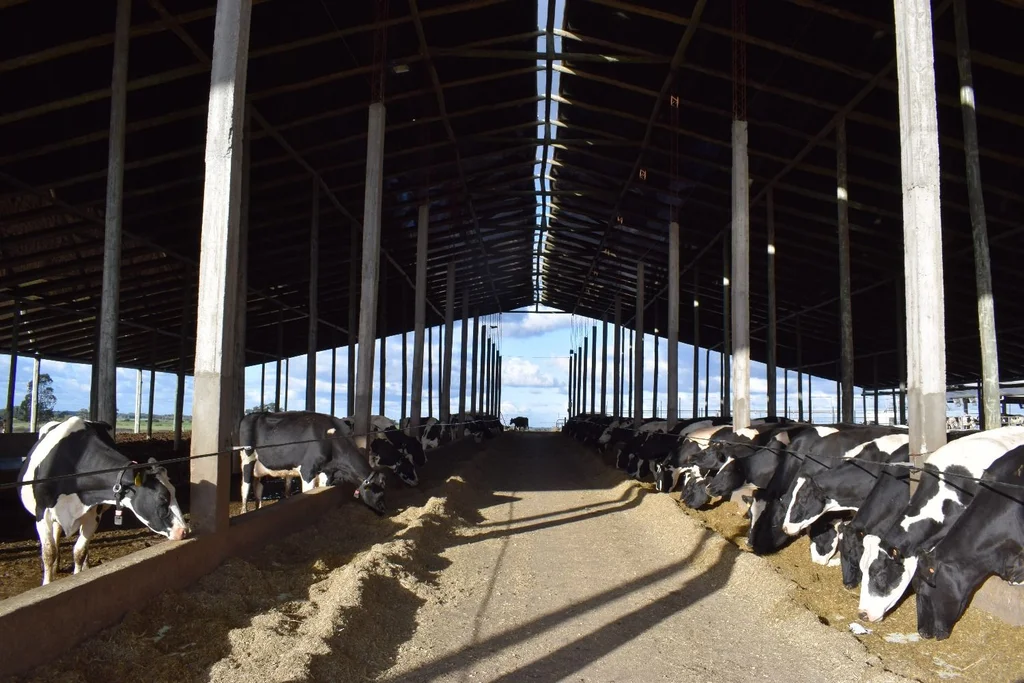
john samuel
There are two heated bed areas, one under each roof wing.
grow indoors
The benefit of this system is that It allows small and medium-sized dairy farmers to grow indoors, overcoming the obstacle of obtaining more land, which, in addition to being expensive, must be close to what is already available..
“There was no other option than to build a roof, we had full capacity for milking cows, according to the platform in the milking parlor,” Antognazza explained.
Having the cows under the roof allowed them to add a third milking for those cows – the rest, the 300 that are still grazing, are still milked twice.
“Our project is to reach four ceilings, one equal to this and two larger ones, to milk 1,000 cows under this system,” he added.
The 190 that are already milked three times reached 42 liters per day at certain times of the year.
In the first closed year, the conversion rate was 1.5 liters produced per kilo of dry matter consumed, when the ratio in the pastoral system is 1 to 1.
That greater production pays for the greater expense that implies giving the food in the form of a silo compared to the grass that the cow harvests in the field by grazing.
At once, under cover there is a noticeable improvement in the content of solids in the milk, both in protein and in fat. “It’s another advantage, plus with a stable diet you get more and better solids all the time,” he said.
Antognazza, supported by the mention of the data by his father, said that the investment in this roof was about US$ 100 thousand, with an average of US$ 500 per cow. A credit was taken with the BROU for three years. With a contribution of 1.5 liters per cow and per day, it is estimated that the payment will be made without problems, including interest.. Even today, with the new price of milk, those 1.5 liters are down considerably.
“The key for everything to go well is to have the litter under control, that there is no more humidity than is ideal, that allows the cow to be comfortable and perform better, we have verified it,” he pointed out.
Another advantage is in the health factor, with three milkings the somatic cells remain low.
At the same time, the cow indoors does not walk trampling the fields and the yield in the production of grass increases from 25 to 30%.
“This closes on all sides, if it is done well, it works,” he emphasized.
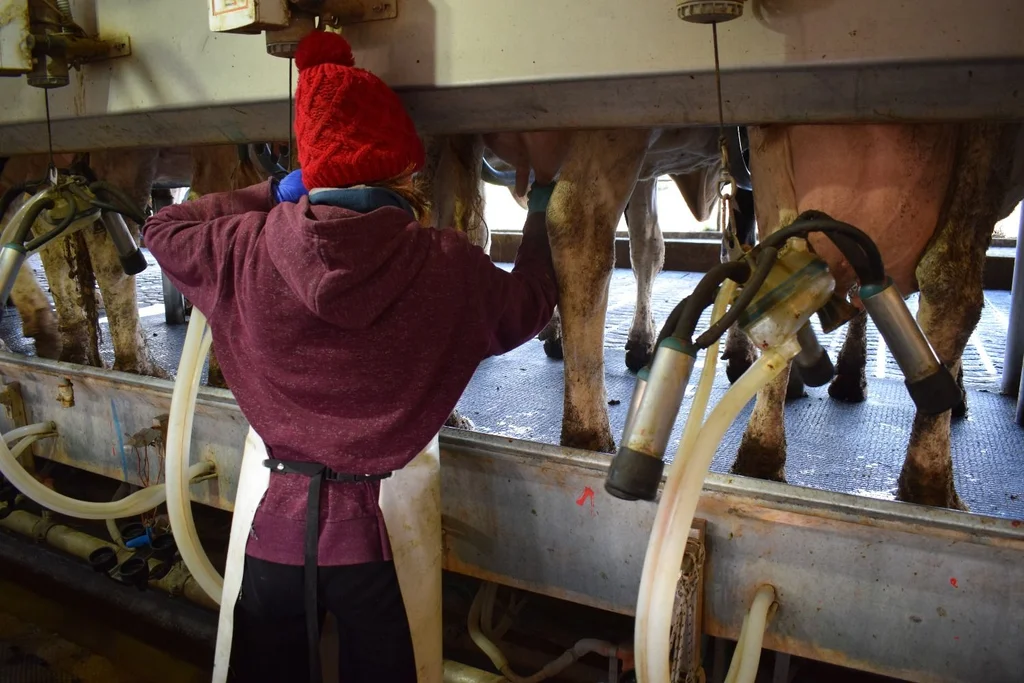
john samuel

john samuel
The cows of the system give more milk, and of better quality, with more solids.
Is it a system suitable for all?
Asked about an acceleration in the adoption of this management in the national dairy area, Antognazza replied: “It adapts better to small and medium-scale producers, to producers with a lot of surface area, who have switched to another system. Entering this will not generate much impact, and they would need to switch to another biotype of cow”.
“Yes, it is highly recommended for cows of the biotype like ours, very efficient in converting dry matter into production, producers who are able to grow indoors, because they do not need more grazing platforms to grow,” he added.
“This is the key to immediately produce more liters indoors”he claimed.
“The industry must pay more attention to these systems, they can be very helpful for producers who want to continue growing. With this system you can immediately see the increase in referral, it is also the only option for the industry to see increased referral in the short term, because with the same area and the same cows there will be more milk, which is what we are all looking for,” he concluded. .
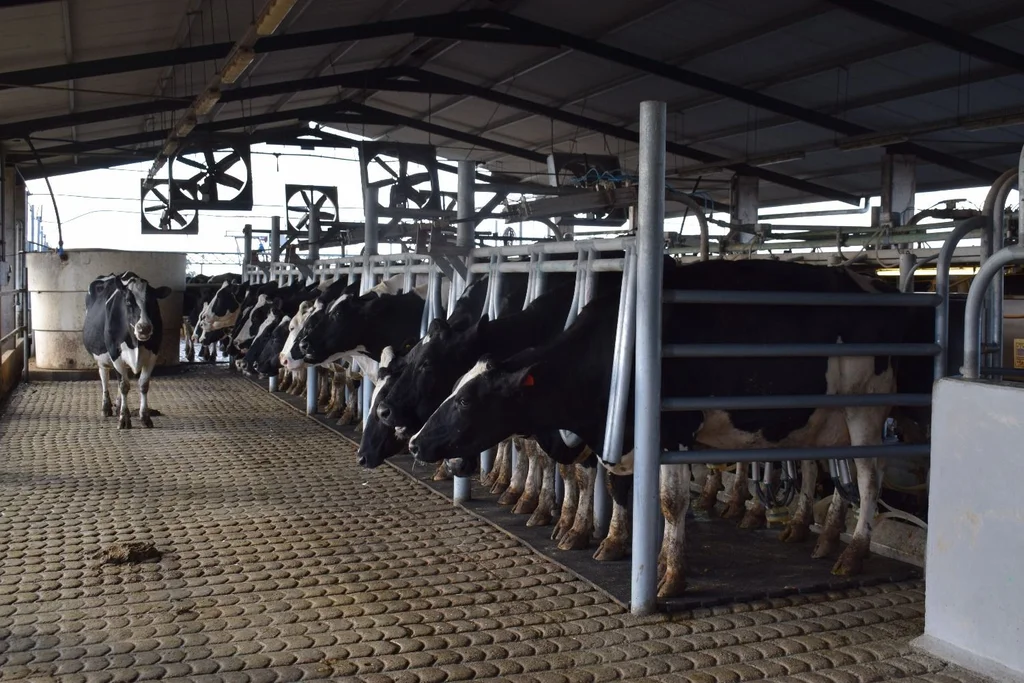
john samuel
The cows that are indoors are milked three times a day.
